This is Part 1 in our Permaculture 101 series, check out Part 2: Zones and Part 3: Forest Gardens!
I’m sure many of you have wondered, “What is this Permaculture I’ve been hearing about, anyways?” It’s a good question and today I’m going to hand this topic over to Joel (my other half) who has his Permaculture Design Certificate and also studies the topic pretty much every moment that he can. This will be the first of many in a series about Permaculture that Joel will write for this blog. We’ll start at the beginning, however, with Permaculture 101: The Basics. Take it away, Joel!
 What is Permaculture?
What is Permaculture?
Permaculture is a holistic design system for creating sustainable human settlement and food production systems. It is a movement concerned with sustainable, environmentally sound land use and the building of stable communities through the harmonious interrelationship of humans, plants, animals and the Earth.
Get 12 Best Permaculture Books for Garden Planning here!
Permaculture Ethics
“Ethics is nothing else than reverence for life” – Albert Schweitzer
- Earth Care ~ We must provide for all life systems on Earth to continue and multiply. We depend on good health in all systems to function for our survival. Our fates are intertwined with all Earth systems.
- People Care ~ All people must have access to those resources necessary for their existence. Cooperation between people makes healthy communities. Helping family and friends aid our own survival as well as the entire family of life.
- Fair Share ~ Continuous growth in a finite system must provide for a return of surplus to the Earth and people to be sustainable. If each person takes only their fair share, then there will be enough for everyone, and there will continue to be in the future.
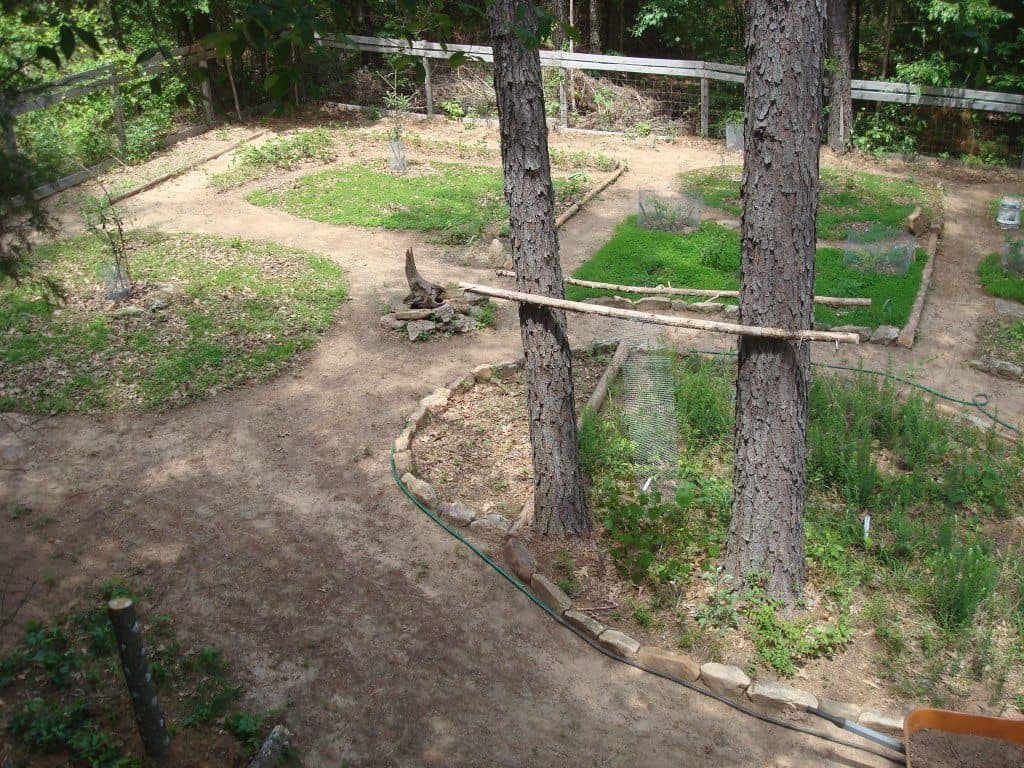
The mere beginnings of a Permaculture landscape. Notice the mushroom log in the bottom left corner.
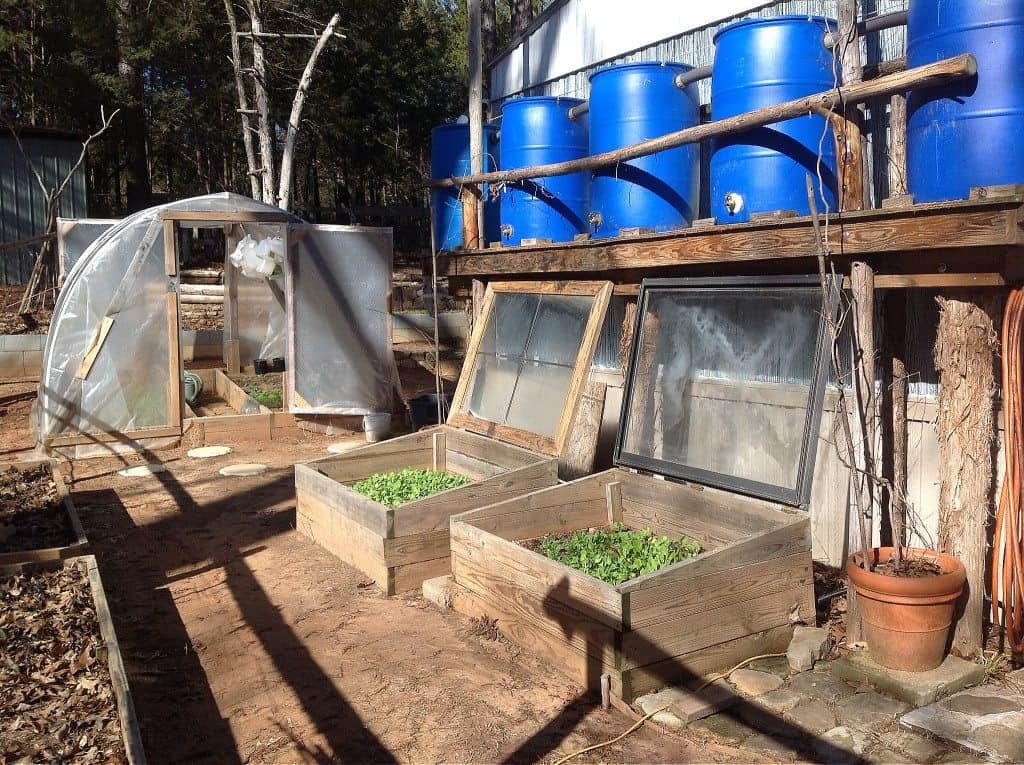
Permaculture is more than just gardening, it’s also about using all of the resources available in a sustainable manner.
To provide you with a good example of what I’m talking about, let’s look at the difference between the conventional way of producing an egg versus the Permaculture Ethics way of producing that same egg, using diagrams from Bill Mollisons’ book, “Permaculture: A Designers’ Manual”
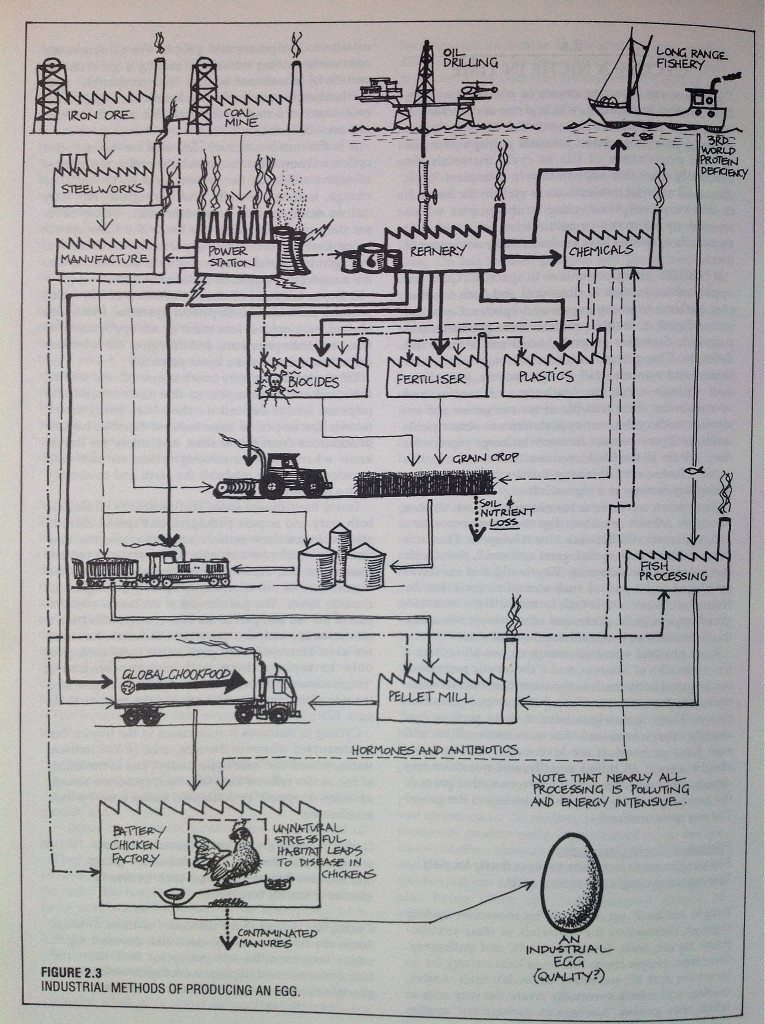
Industrial Methods of Producing an Egg. From “Permaculture: A Designers’ Manual” by Bill Mollison.
The Permaculture method of producing an egg shows care of the Earth by not using unsustainable, extractive, polluting methods. The only commercially fabricated products can be recycled, repurposed and reused almost indefinitely (chicken wire, drum, roofing, guttering). All other inputs are sustainable and help provide a better, more rich Earth environment.
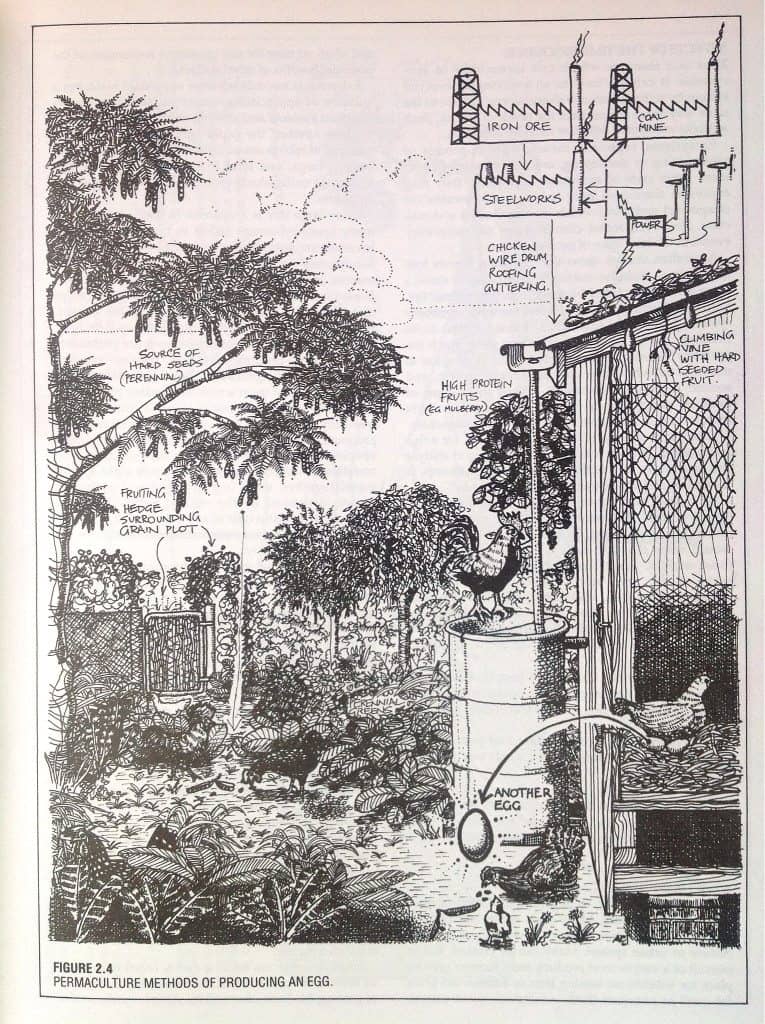
Permaculture Methods of Producing and Egg. From “Permaculture: A Designers’ Manual” by Bill Mollison.
People care is exemplified by producing an egg that contains no unnatural ingredients, such as hormones and antibiotics. The industrial method produces an egg that contains these products that are detrimental to a persons health. By moving to a Permaculture method of producing eggs, more people will be able to share in the bounty by not having to rely on an expensive, energy intensive industrial method of producing an egg.
This is only one example of putting the Permaculture Ethics into action, and I will talk about different systems and designs in more detail as we go along. For now, think about how you can start to move your lifestyle more towards Permaculture Ethics. With everything that you do think of Earth care, people care and fair share and I’m certain that you will start feeling more connected not only to your food, but to all of the systems that life depends on.
Thanks Joel! This is just to get you started in thinking the Permaculture way, there will definitely be more to come! I can’t wait until we can get our very own Permaculture landscape up and running, and you better believe that I’ll be taking you along for the ride! For those of you who want further reading, check out the book Gaia’s Garden by Toby Hemenway and, of course, the bible where the wonderful egg production diagrams came from:
Permaculture: A Designers’ Manual by Bill Mollison, the father of Permaculture.
Now I’m excited for Part 2!
If you’re ready to jump into creating a permaculture landscape around your home, start with our Permaculture Gift Guide or one of these great Backyard Permaculture Projects!

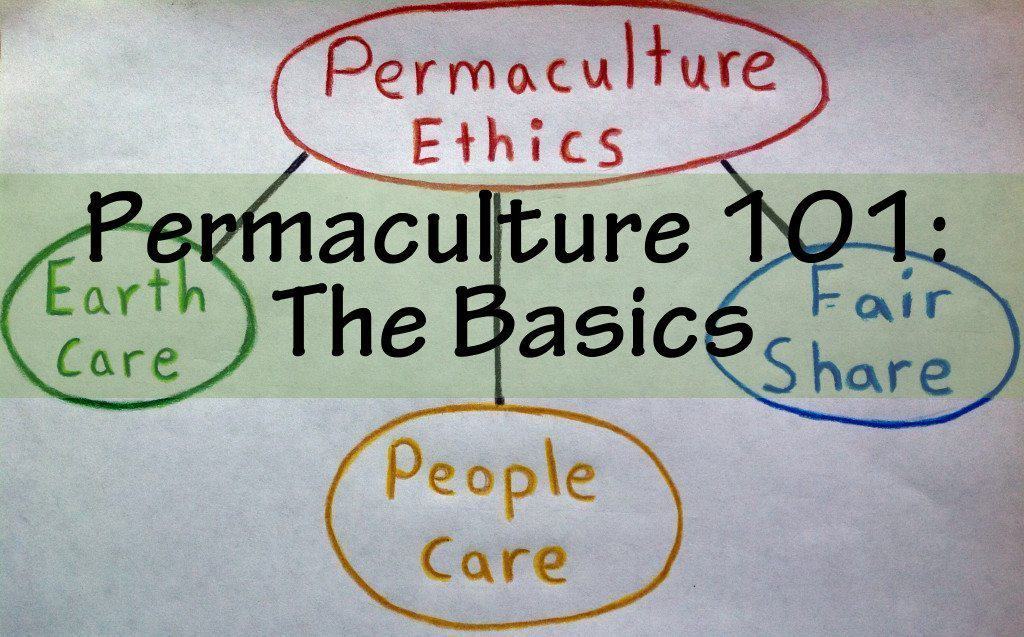 What is Permaculture?
What is Permaculture?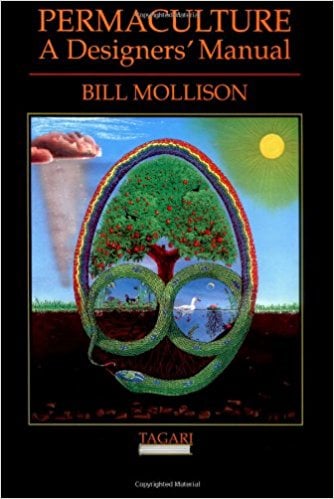

I live on 12 acres in Northern California, central valley. I see my place as a combination playground and laboratory. I built terraces and swales for water issues, hugelkulture, a pond to use effluent from reverse osmosis system for a cooling dunk, This year I added no-till, and have started using biochar.Too much to say here, but I’m interested in your stories.
Your property sounds incredible, Cheryl!
Hi, I just stumbled upon your blog. I also live in the rogue valley and have been thinking of turning our land into a food forest.
Do you have any formal training on permaculture? I’m only asking because I was considering taking a permaculture class that Oregon State university offers this fall. I was wondering if it were necessary or do you think I could find the basics to get started in the books you recommend?
Or do you have any other book recommendations on the subject?
Hi Lynzie, I’m going to send you an email with more info on this :)
I also live in the Rogue Valley. I would love to hear what you had to say about the program. We have 160 acres and I would love to add permaculture areas throughout.
Love this!! I try to incorporate principles of permaculture into my garden and am always looking for more examples.
Loved this Joel! So interesting. Now I know what you have been up to!
He’s always up to something… building a rainwater collection barrel right now, haha!